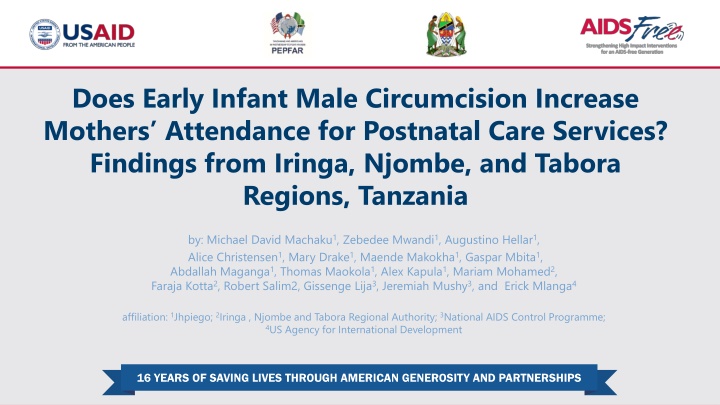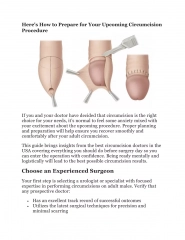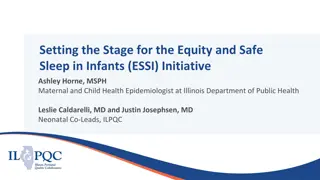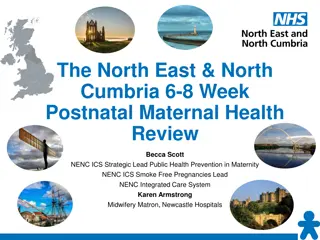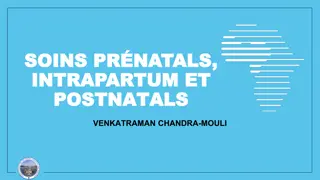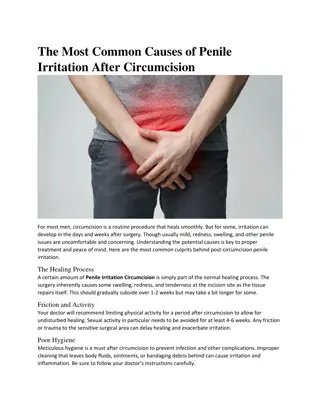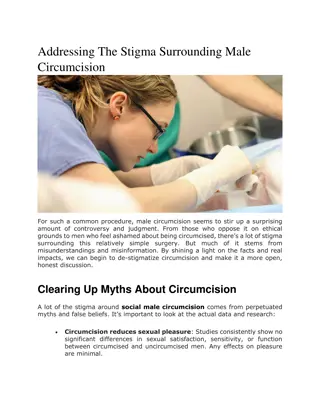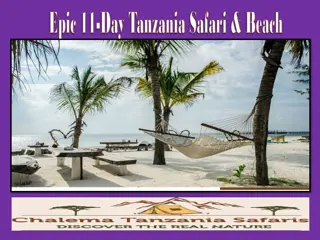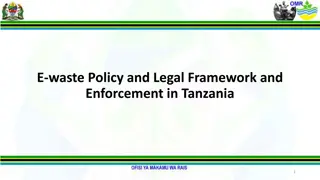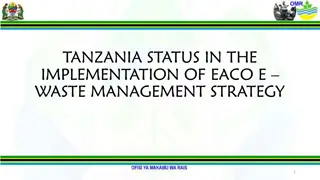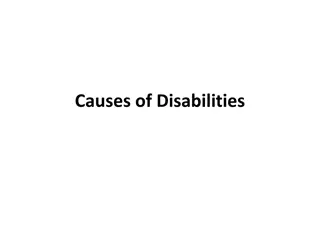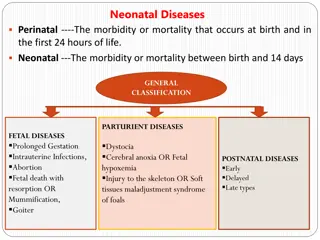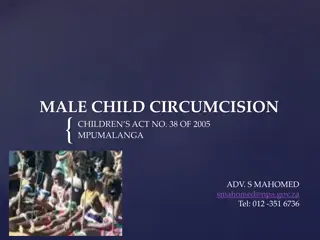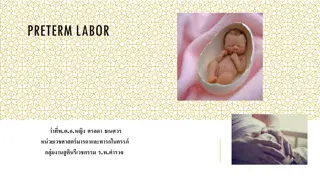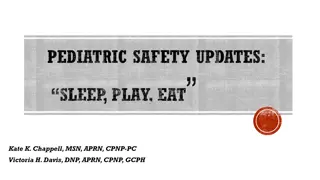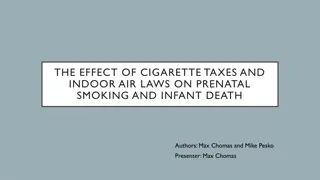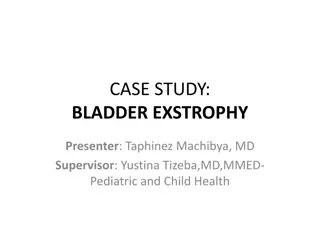Early Infant Male Circumcision Impact on Postnatal Care in Tanzania
This study explores whether the implementation of early infant male circumcision (EIMC) programs in high HIV prevalence regions of Tanzania has influenced maternal attendance for postnatal care services. The research examines the relationship between EIMC availability in health facilities and the proportion of infants born at home receiving postnatal care. The findings shed light on potential benefits of integrating EIMC programs with postnatal care services to improve maternal and neonatal health outcomes in Tanzania.
Download Presentation

Please find below an Image/Link to download the presentation.
The content on the website is provided AS IS for your information and personal use only. It may not be sold, licensed, or shared on other websites without obtaining consent from the author.If you encounter any issues during the download, it is possible that the publisher has removed the file from their server.
You are allowed to download the files provided on this website for personal or commercial use, subject to the condition that they are used lawfully. All files are the property of their respective owners.
The content on the website is provided AS IS for your information and personal use only. It may not be sold, licensed, or shared on other websites without obtaining consent from the author.
E N D
Presentation Transcript
Does Early Infant Male Circumcision Increase Mothers Attendance for Postnatal Care Services? Findings from Iringa, Njombe, and Tabora Regions, Tanzania by: Michael David Machaku1, Zebedee Mwandi1, Augustino Hellar1, Alice Christensen1, Mary Drake1, Maende Makokha1, Gaspar Mbita1, Abdallah Maganga1, Thomas Maokola1, Alex Kapula1, Mariam Mohamed2, Faraja Kotta2, Robert Salim2, Gissenge Lija3, Jeremiah Mushy3, and Erick Mlanga4 affiliation: 1Jhpiego; 2Iringa , Njombe and Tabora Regional Authority; 3National AIDS Control Programme; 4US Agency for International Development
Background The World Health Organization (WHO) recommends at least four postnatal care (PNC) visits in the 6-week postpartum period. Most maternal and neonatal deaths occur during the postpartum period. The maternal mortality ratio in Tanzania is 556 per 100,000. Neonatal deaths are 42/1,000 live births2 In Tanzania only 37% of mothers who give birth reported seeing someone for a checkup after birth.1 women who deliver in a health facility are more likely to have had a postnatal health checkup within 2 days of delivery than those who had a non-facility delivery (50% versus 6%).1 A mother delivered at home and came for early infant male circumcision. Photo by Owen Mwandumbya, Jhpiego. 1Tanzania Demographic Health Survey, 2015/6 2Tanzania Demographics Profile 2018
Background Voluntary medical male circumcision (VMMC) is a proven biomedical intervention that provides partial protection against HIV acquisition. In 2011, WHO and UNICEF recommended that early infant male circumcision (EIMC) be introduced when countries reach high circumcision coverage rates in adolescents and adults. EIMC is a long-term strategy to maintain high circumcision coverage in areas with high HIV prevalence. Reproductive and child health providers preparing infant for procedure. Photo by Jhpiego. In Tanzania, EIMC was piloted in 2013 and scaled up in three high HIV prevalence regions from 2014 2018. Iringa (10.3%), Njombe (11.4%), and Tabora (5.1%).1 1THIMS 2016 17
Hypothesis We hypothesized that facilities with the EIMC program, would have higher proportions of infants born at home coming for PNC services when compared to facilities which were without the EIMC program.
EIMC Scale-Up Timeline in Tanzania 2017 2014 2010 EIMC introduced in Tabora Morogoro and Singida VMMC and EIMC scale-up VMMC pilot, Iringa EIMC pilot, Iringa EIMC introduced in Njombe VMMC scale- up EIMC introduced in Iringa 2009 2013 2016
EIMC Service Delivery Model Community workers provide education within the communities and referral for EIMC services. They target all infants-those born at facilities and at home Immunization Parents of eligible male infants ages 24 hours to 60 days are educated about EIMC in group education. Prevention of mother-to-child transmission EIMC RCH Providers in reproductive and child health (RCH) services are trained in EIMC services. Family planning Triage: weight Integration allows for one-stop services for parents and their infants. Postpartum
Methods Conducted a retrospective data review of national DHIS2 database from 36 health facilities that offer EIMC services between October 2016 and September 2018. Identified number of infants who had EIMC versus no EIMC Assessed all infants that received PNC services to determine the number of babies who were born at home. Compared the percentages of infants born at home that had EIMC versus percentage of infants born at home that did not have EIMC services and compared using a two population z-test.
Number of EIMC sites 36 60,963 Infants Attended PNC Attended PNC 60,963 Infants 8,748 infants received EIMC 52,215 infants did not received EIMC Born at home 298 (3.4%) Born at home 819 (1.6%)
Results Among infants born at home, those who accessed EIMC services were more likely to attend PNC services than those who did not access EIMC services (p<0.0001, z>11.54)
Conclusion Community and facility EIMC advocacy activities encourage parents to bring infants to PNC services for EIMC. Offering EIMC services may be a catalyst to increase rates of PNC service uptake, especially for those infants born at home. Looking at demand for EIMC services alongside other factors to increase postpartum care rates can help support good outcomes of mothers and babies in the postnatal care period.
Acknowledgments Jhpiego John Snow Inc., AIDSFree Regional Health Authorities, Iringa, Njombe, and Tabora Ministry of Health, Community Development, Gender, Elderly, and Children US Agency for International Development, Tanzania Thispresentation is made possible by the generous support of the American people through the US President s Emergency Plan for AIDS Relief (PEPFAR) with the US Agency for International Development (USAID) under the Cooperative Agreement Strengthening High Impact Interventions for an AIDS-free Generation, number AID-OAA-A-14-00046. The information does not necessarily reflect the views of USAID, PEPFAR, or the US Government.
